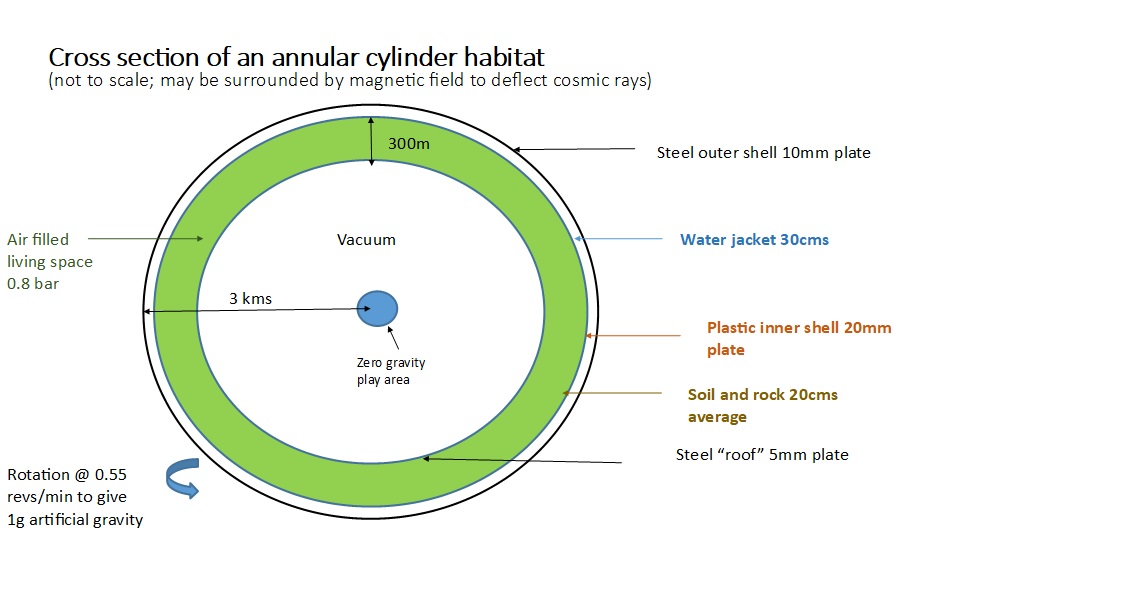How much does it cost?
I hope that I have shown in previous posts that free standing orbital colonies are feasible for life, can be protected from radiation and meteorites, and the resources for them are available in the inner solar system. Even given that, the objection will be made that the cost of building such massive megastructures would be prohibitive.
Well, I have had a go at working out the cost of a big habitat, which has a cylinder of 3km radius, 10kms long, with two assumptions for population: at 500/sq.km, and 188,000 at 1000/sq.km. To do so I have had to make some “heroic” assumptions, especially about raw material costs. The numbers are thus more “national park” than even “ball park”. Of course in practice the method of construction and the unit costs will not be what I have assumed; however it is to give an order of magnitude.
I have compared the construction cost per inhabitant with the installed total capital cost per inhabitant in a developed country, consisting of productive plant and constructions, infrastructure, including the value of residences and value of land (this is appropriate, as the habitat builds the land). For the USA this works out at about $250K per inhabitant, and for the UK $200-220K, depending on the exchange rate. If the habitat cost is a large multiple of this it may be prohibitive, a low multiple may be doable.
For reasons I will explain later, I have done two calculations. One is a simple cylinder completely filled with air. The other is an “annular cylinder” with an inner surface 300 m within the outer shell acting as a roof, and only the living space between inner and outer shells is filled with air (doubtless one could paint the roof sky blue, and add fluffy white clouds…). The assumptions about the construction of the annular cylinder variant are shown in the diagram below, and explained further and costed in the next post.

Previous chapter:
Getting Around in Space
Next chapter:
Assumptions on cost calculations